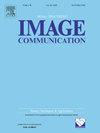A transformer-based siamese network using a self-attention mechanism for change detection in remote sensing data
IF 2.7
3区 工程技术
Q2 ENGINEERING, ELECTRICAL & ELECTRONIC
引用次数: 0
Abstract
Efficient change detection in remote sensing data remains a critical challenge, necessitating a comprehensive solution that addresses diverse data formats and applications. Existing methods often specialize in specific complications, lacking a unified approach for various data types and resolutions. In this study, we propose an innovative methodology that integrates a Siamese network with a Transformer model using a self-attention mechanism, providing a versatile solution for change detection. Our approach introduces a Pairwise Learning Task and Feature Fusion techniques, leveraging Convolutional and Transformer Layers to enhance precision. The Siamese network, developed for similarity determination, is augmented with self-attention mechanisms, enabling the capture of intricate feature relationships across sequences. Our method not only excels in binary change mapping but also in feature type identification, adding valuable insights to the remote sensing domain. Experimental results on Sentinel-2, QuickBird, and TerraSAR-X datasets demonstrate that our approach achieves overall accuracies of 99.23 %, 98.96 %, and 99.08 %, respectively, and F1-scores of 92.16 %, 95.74 %, and 96.21 %, significantly outperforming existing state-of-the-art methods by margins of up to 4.3 % in accuracy and 7.7 % in F1-score. These results highlight the proposed method’s adaptability, precision, and robustness. The methodology, focusing on efficiency and accuracy, presents a significant advancement in remote sensing change detection, with promising applications in environmental monitoring, urban planning, and disaster management.
一种基于变压器的暹罗网络,使用自关注机制来检测遥感数据的变化
对遥感数据进行有效的变化检测仍然是一项重大挑战,需要针对不同数据格式和应用的综合解决方案。现有的方法通常专门针对特定的复杂性,缺乏针对各种数据类型和分辨率的统一方法。在这项研究中,我们提出了一种创新的方法,该方法使用自关注机制将Siamese网络与Transformer模型集成在一起,为变更检测提供了一种通用的解决方案。我们的方法引入了成对学习任务和特征融合技术,利用卷积层和变压器层来提高精度。为相似性确定而开发的Siamese网络增加了自注意机制,从而能够捕获序列之间复杂的特征关系。我们的方法不仅在二元变化映射方面表现出色,而且在特征类型识别方面也表现出色,为遥感领域提供了有价值的见解。在Sentinel-2、QuickBird和TerraSAR-X数据集上的实验结果表明,我们的方法的总体准确率分别为99.23%、98.96%和99.08%,f1分数分别为92.16%、95.74%和96.21%,显著优于现有的最先进的方法,准确率最高为4.3%,f1分数最高为7.7%。结果表明,该方法具有较好的适应性、精度和鲁棒性。该方法注重效率和准确性,在遥感变化检测方面取得了重大进展,在环境监测、城市规划和灾害管理方面具有广阔的应用前景。
本文章由计算机程序翻译,如有差异,请以英文原文为准。
求助全文
约1分钟内获得全文
求助全文
来源期刊

Signal Processing-Image Communication
工程技术-工程:电子与电气
CiteScore
8.40
自引率
2.90%
发文量
138
审稿时长
5.2 months
期刊介绍:
Signal Processing: Image Communication is an international journal for the development of the theory and practice of image communication. Its primary objectives are the following:
To present a forum for the advancement of theory and practice of image communication.
To stimulate cross-fertilization between areas similar in nature which have traditionally been separated, for example, various aspects of visual communications and information systems.
To contribute to a rapid information exchange between the industrial and academic environments.
The editorial policy and the technical content of the journal are the responsibility of the Editor-in-Chief, the Area Editors and the Advisory Editors. The Journal is self-supporting from subscription income and contains a minimum amount of advertisements. Advertisements are subject to the prior approval of the Editor-in-Chief. The journal welcomes contributions from every country in the world.
Signal Processing: Image Communication publishes articles relating to aspects of the design, implementation and use of image communication systems. The journal features original research work, tutorial and review articles, and accounts of practical developments.
Subjects of interest include image/video coding, 3D video representations and compression, 3D graphics and animation compression, HDTV and 3DTV systems, video adaptation, video over IP, peer-to-peer video networking, interactive visual communication, multi-user video conferencing, wireless video broadcasting and communication, visual surveillance, 2D and 3D image/video quality measures, pre/post processing, video restoration and super-resolution, multi-camera video analysis, motion analysis, content-based image/video indexing and retrieval, face and gesture processing, video synthesis, 2D and 3D image/video acquisition and display technologies, architectures for image/video processing and communication.
 求助内容:
求助内容: 应助结果提醒方式:
应助结果提醒方式:


